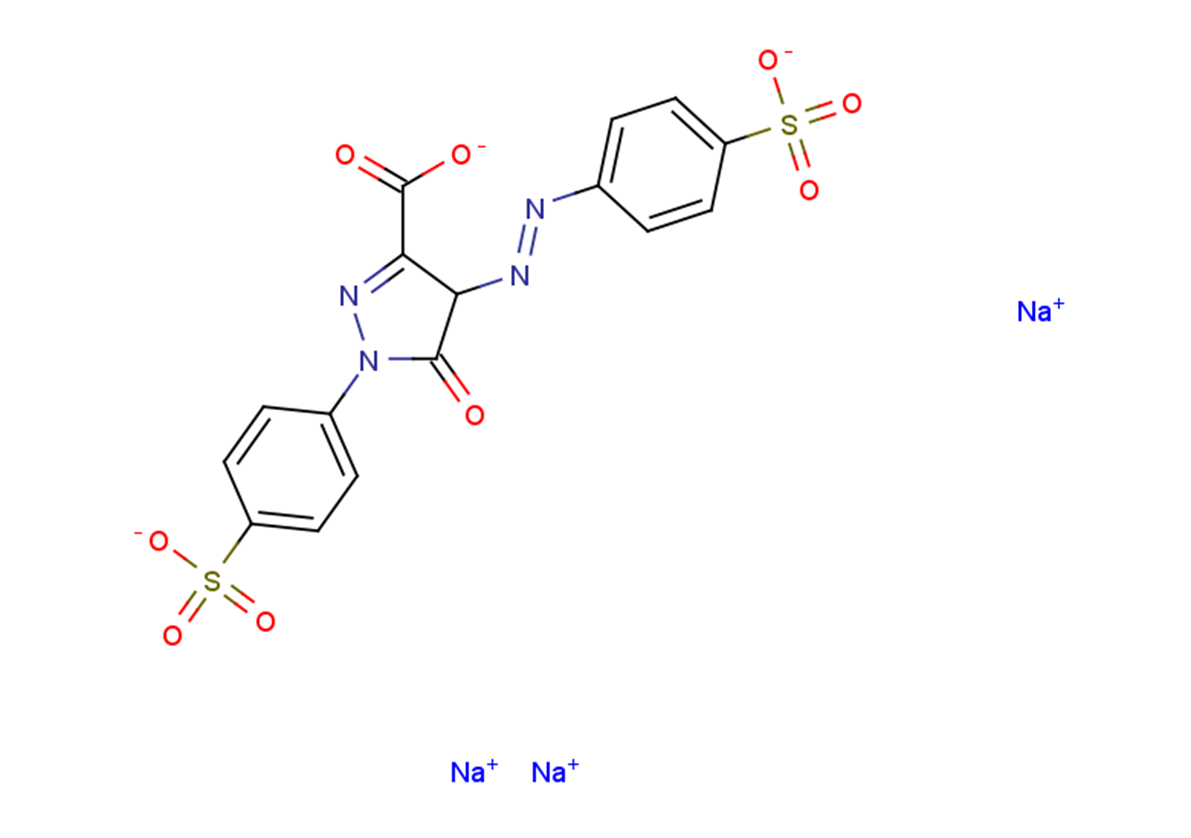
Tartrazine
CAS No. 1934-21-0
Tartrazine( Acid Yellow 23 | FD&C Yellow No. 5 )
Catalog No. M23881 CAS No. 1934-21-0
Tartrazine is a food additive that belongs to a class of artificial dyes and contains an azo group.
Purity : >98% (HPLC)
 COA
COA
 Datasheet
Datasheet
 HNMR
HNMR
 HPLC
HPLC
 MSDS
MSDS
 Handing Instructions
Handing Instructions
| Size | Price / USD | Stock | Quantity |
| 500MG | 38 | In Stock |


|
| 1G | 45 | In Stock |


|
Biological Information
-
Product NameTartrazine
-
NoteResearch use only, not for human use.
-
Brief DescriptionTartrazine is a food additive that belongs to a class of artificial dyes and contains an azo group.
-
DescriptionTartrazine is a food additive that belongs to a class of artificial dyes and contains an azo group; it has significant genotoxic effect , may be harmful to health and its prolonged use could trigger carcinogenesis.
-
In Vitro——
-
In Vivo——
-
SynonymsAcid Yellow 23 | FD&C Yellow No. 5
-
PathwayOthers
-
TargetOther Targets
-
RecptorOthers
-
Research Area——
-
Indication——
Chemical Information
-
CAS Number1934-21-0
-
Formula Weight534.36
-
Molecular FormulaC16H9N4Na3O9S2
-
Purity>98% (HPLC)
-
SolubilityDMSO:45 mg/mL (84.21 mM; Need ultrasonic);H2O:45 mg/mL (84.21 mM; Need ultrasonic)
-
SMILESO=C([O-])C(C1/N=N/C2=CC=C(C=C2)S(=O)([O-])=O)=NN(C1=O)C3=CC=C(C=C3)S(=O)([O-])=O.[Na+].[Na+].[Na+]
-
Chemical Name——
Shipping & Storage Information
-
Storage(-20℃)
-
ShippingWith Ice Pack
-
Stability≥ 2 years
Reference
1.Rovina K, Siddiquee S, Shaarani SM. A Review of Extraction and Analytical Methods for the Determination of Tartrazine (E 102) in Foodstuffs. Crit Rev Anal Chem. 2017 Jul 4;47(4):309-324. doi: 10.1080/10408347.2017.1287558. Epub 2017 Jan 27.
molnova catalog



related products
-
Methyl propyl disulf...
Methyl propyl disulfide is a natural compound containing volatile sulfur produced in garlic and onions. Methyl propyl disulfide displays an anticaner effect.
-
Ceftiofur hydrochlor...
Ceftiofur HCl is a cephalosporin antibiotic, used to treat both Gram-positive and Gram-negative bacteria infection.
-
FPR A14
FPR A14 is an agonist of formyl peptide receptor (FPR) and induces cell differentiation.



 Cart
Cart
 sales@molnova.com
sales@molnova.com


